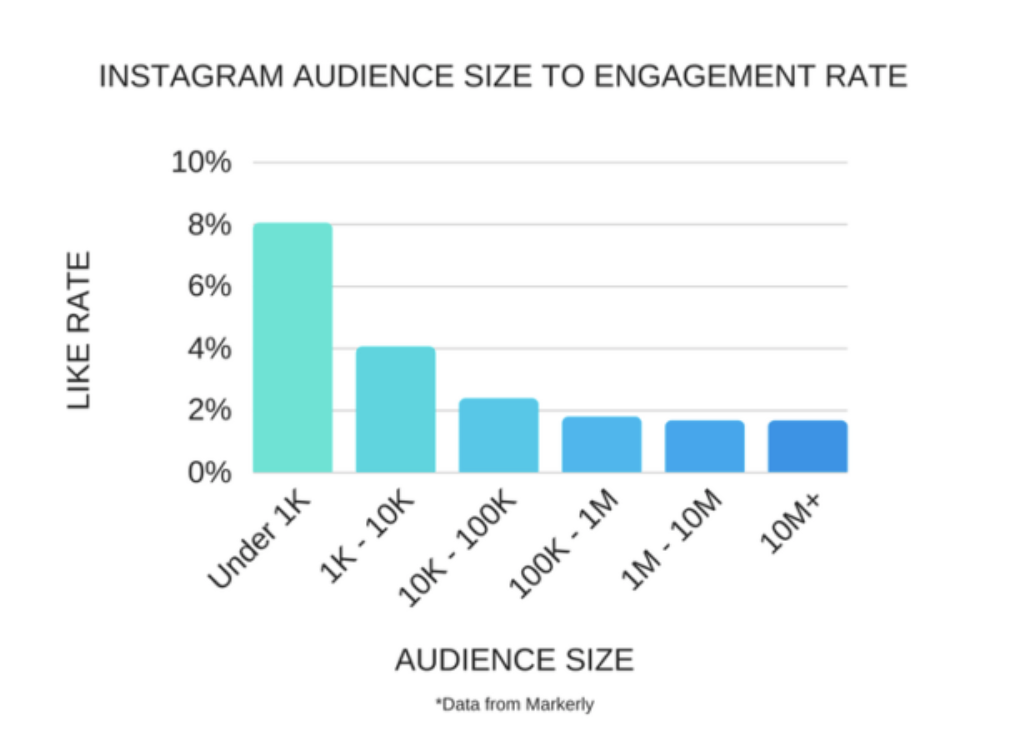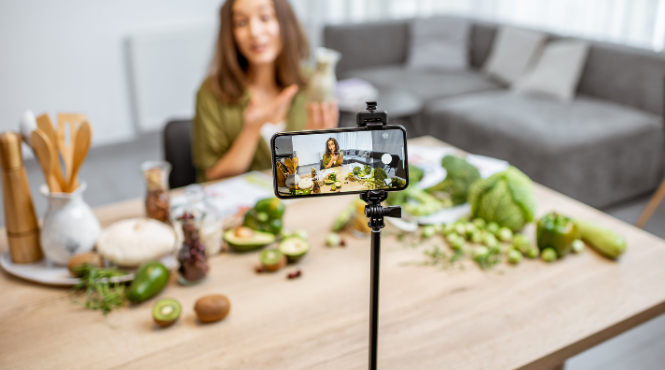The Future of Influencer Marketing Is Here
Having worked with influencers for such brands as Barnes & Noble, Proctor & Gamble, Dell Computers, and Summit Brands, as well as brands in the food & beverage and wellness categories, we understand that when done correctly, influencer marketing is one of the most powerful marketing strategies available.
We’ve written about various influencer topics in the past, and one thing is clear: influencer marketing has evolved, and marketing strategies must also evolve to remain relevant.
Here are some of the influencer marketing trends predicted for 2021.
The Continued Rise of Micro and Nano-Influencers
Micro-influencers will continue to be more powerful than celebrity influencers for authentic engagement with a brand’s target audiences. In 2020, more than 46% of brand mentions featuring the hashtag #ad were published by Instagram accounts with 1k-20k followers. That will undoubtedly grow at least to 50% this year, if not more. Almost one-third of Instagram channels are currently micro-influencers with fewer than 100k followers. Mega-influencers and celebrities with over 5 million followers make up less than 1% of all influencers.
Micro- and nano-influencers enjoy better engagement with their audiences because they work hard to build their brand, entertain their followers, and build relationships with their clients. Even better, because they’re part of smaller communities, they’re more relatable than celebrities, which means their followers are more likely to act on their recommendations.

Specialized Influencers
Brands will also be looking to work with specialized influencers that have deep niches, which supports better engagement rates. For instance, instead of food & beverage influencers, brands may engage influencers who specialize in organic foods or foods for specific allergies or sensitivities. Beauty brands will connect through influencers that fit their brand’s specific niche, such as sustainability or affordability.
Employees as Influencers
One group of specialized influencers are employees. Employees are often the first—and sometimes only—true connection customers have with a brand. That is likely why content shared by company employees typically receives 8x more engagement.
Savvy brands understand the power their employees hold, and that’s why many are taking the opportunities presented. Sometimes the opportunity is surprising and sudden, like Wendy’s repost of an employee’s video that has since received upward of 3 million views. Others have been more organized, like Macy’s Style Crew, which shares employees’ modeling store products.
Whether micro, nano, specialized, or employee influencers, ultimately it’s about finding the influencer whose audience matches the brand. And for this, the more niche, the better. Influencers with large audiences who don’t match the brand typically won’t generate as good of results.
Video: Still the King of Content
We can expect to see an even greater focus on creating assets beyond posts, with video on Instagram Stories and Reels, YouTube, and Facebook. In 2020, video ads were the top wayconsumers discovered brands they later purchased.
While Facebook users watching live video increased 50%, the average Instagram engagement ratio is 29.67 per 1k followers. By comparison, Facebook posts average 16.54 interactions per 1k followers.
In the coming year, watch out for TikTok. Its audience now has nearly 850 million monthly active users and continues to grow daily. TikTok is still largely untapped as a marketing tool, with only 10% of marketers saying they’ve used it. Of that 10%, however, 66% say they experienced success. Expect to see 25% of marketers—or maybe more—approach TikTok as a new marketing channel this year.
View this post on Instagram
A post shared by Summit Brands (@hellosummitbrands)
Performance-Based Influencer Marketing
Gone are the days of measuring the success of posts simply by how much engagement they receive. While engagement is certainly still an excellent indicator, we can expect to see a much bigger push toward measurements that mean bigger bottom lines.
To that end, expect performance-based influencer marketing to take center stage this year. Sales will be a key performance indicator, though brands may also prioritize website traffic, clicks, or other metrics. Regardless, they will be watching and measuring influencer content closely to ensure it brings real value to the brand.
SEO Comes to Influencer Marketing
Until this year, searching topics on Instagram required the use of hashtags, but this will no longer be the case. Searching with keywords will now be possible, meaning that exposure to new followers will increase exponentially. For instance, instead of searching hashtags for #organicrecipes or #crueltyfreemakeup and hoping for extensive results, users will be able to search by keywords for a larger return on accounts and posts.
With this new feature, posts that feature the keywords will appear in searches even if there is no hashtag for that keyword. This could change the way that users find content—and how influencers create their posts. Instead of rows of hashtags to maximize chances for exposure, posts can take on a more natural flow without sacrificing engagement.
How AI Is Shaping Influencer Marketing
While AI technology has made creating virtual influencers look and interact like real people, it is highly doubtful that these influencers will become the norm. Authentic influencers have a personal connection and a trusted voice with their audience. Influencers generated by computers may offer inspiration, but they will likely elicit a real feeling of betrayal when a follower or customer realizes the virtual influencer is not a real person.
So while virtual influencers won’t be replacing human influencers anytime soon, AI can certainly play a role in sifting through influencer performance data — assessing what types of brands influencers have worked with previously, and which influencers performed well by driving qualified engagement and conversions around particular products or content.
While influencer marketing is not perfect, it’s still one of the most effective ways for brands to drive online conversations and find new customers. Taking advantage of all that influencer marketing can offer in 2021 will require more than an exchange of free products for exposure. Still, the work you put into your campaigns will pay off. Avoid the known pitfalls, watch for red flags, and work with an experienced agency to develop relationships with influencers you can trust.
If you’d like to explore influencer marketing in 2021, or revamp your current influencer marketing strategies, give us a call.

